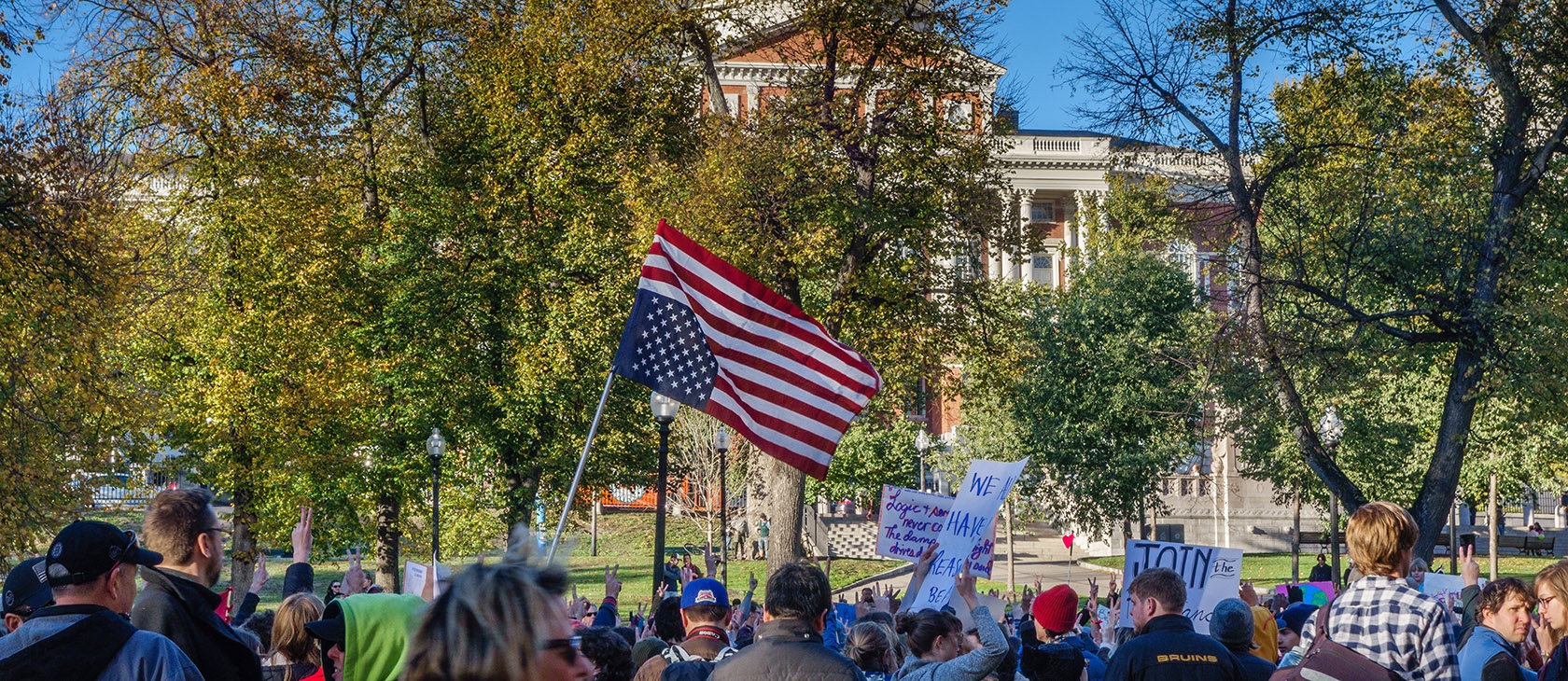For the past five decades, Americans have waged what has been commonly referred to as a “culture war.” A number of authors have examined the culture wars from philosophical, historical, and sociological standpoints, especially since the early 1990s—Charles Murray, Robert Putnam, James Davison Hunter, Philip Gorski, and Andrew Hartman to name a few. It is tempting to see the culture wars as being the defining characteristic of American history since the 1960s. How central are the culture wars to American life at the beginning of the twenty-first century, and is there anything unusual about the presence of cultural conflict in America when we think historically about the subject?
I argue that there is not much qualitatively unique about the culture wars of the last fifty or so years, especially as long as Americans have the intellectual resources from which to draw in order to bridge the partisan divides—and I think that they do. I also argue that it is necessary to broaden the accepted paradigm of “culture wars”—a paradigm useful only to contemporary history—to what I think is a more sustainable historical understanding of domestic social and political conflict over time. Alexis de Tocqueville gives us important guidance as we consider cultural conflict in American history more broadly. His treatment of the irrepressible conflict between the majority and the minority in America is applicable to every cultural divide in American history, and also offers a more helpful paradigm in terms of plotting a way forward across the crevasse-rent landscape of today’s cultural and political discourse. When authors treat the culture wars of the past five decades, they often ask, “what can we do?” When we take the long view of cultural conflict in America, we are in a position to gain wisdom in answering this question.
...culture wars are incredibly complex with overlapping conflicts that are often confused and conflated...
Let’s remember that the culture wars are incredibly complex with overlapping conflicts that are often confused and conflated, one with another. The participants in the culture wars come from an enormous variety of political and religious persuasions, socio-economic classes, races and ethnicities, and sexual orientations and gender identities. Over the past few decades, we can describe the culture wars as embracing a number of distinct binaries simultaneously: Romanticism vs. Enlightenment; intellectualism vs. volitionalism; modernism vs. postmodernism; deconstructionism vs. absolutism; elitism vs. populism; therapeutic vs. classical liberalism; individualism vs. communitarianism; nationalism vs. globalism or identity politics; consolidation vs. disaggregation; progressivism vs. orthodoxy; and radical secularism vs. religious nationalism. Many of these binary conflicts have arisen in contemporary times, but some are leftover conflicts from earlier periods in American history, going back as far as the colonial period. Some of these conflicts have arisen only recently, but are intensified by the older debates. Giving room for the complexity of American cultural conflict helps us to see that the present day culture wars are not simply matter of left versus right. And as long as Americans have cultural, historical, aesthetic, religious, philosophical, and political resources from which to draw, there is hope for bridging those divides. The Civil War, for example, was fought partly because those resources were no longer commonly accessible to Americans. Americans do not appear to be unable to draw on our shared resources today as they were in 1861. The pool of available cultural resources is much deeper now than then, and more accessible to more people from more diverse backgrounds than ever. Philip Gorski’s recent book, American Covenant: A History of Civil Religion From the Puritans to the Present, powerfully demonstrates this point.
Instead of thinking of the culture wars as unique to our times, let’s look to Tocqueville for guidance. In chapter fifteen of volume one in Democracy in America, Tocqueville writes that as long as sovereignty rests with the people in America—in other words, as long as America remains a democracy—the majority of the people rule, both politically and culturally. The power of the majority is absolute, and anytime power is absolute, grave danger to freedom exists. Human nature tends toward abuse of power, and the majority tends to tyrannize the minority.
In American democracy, in which the majority rules, free speech is never absolute.
An excellent example of how the tyranny of the majority works, Tocqueville wrote, is in the way free speech operates in America. In American democracy, in which the majority rules, free speech is never absolute. For example, while the people consider a particular issue—take gay marriage—speech is completely free. Both sides, those opposed and those in favor, make their arguments. The majority is coalescing around a particular position, and during that time, both sides are free to speak up and make their arguments. But once the majority view is settled, speech on the issue is no longer free. A line is drawn, so to speak, around the issue defining what is acceptable to the majority and what is off limits. Those who are in the minority quickly learn to keep their opinions and arguments to themselves, or face dire consequences.
Tocqueville observed that one can know Americans have lost their freedom when the minority no longer believes that there is any common intellectual or cultural resource to access in order to bridge partisan divides, and all that is left to them is violence. Indeed, we can look to numerous episodes in American history when minorities representing various groups have done just that.
Both sides, left and right, have a tendency to view their visions for America in normative terms. Both sides are guilty of reckoning themselves champions of righteousness and the other as paragons of evil to be totally annihilated. If we adhere to a broader paradigm like the one Tocqueville offers—the conflict between a (potentially) tyrannical majority and a marginalized minority—perhaps left and right can avoid normativizing their positions and pitting one side against the other, with unconditional surrender as the only resolution to the conflict. If we recognize that conflicts between majorities and minorities are common, even somewhat ordinary, in our democracy, perhaps we can have a basis for dialogue that is less martial, more civil, and thus draws on resources that contribute to the bridging of divides.




